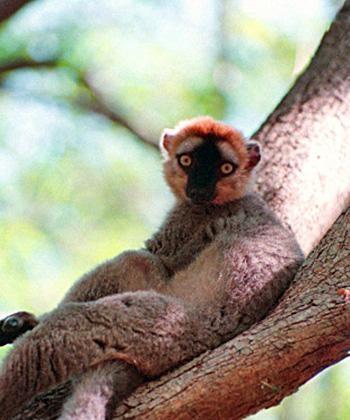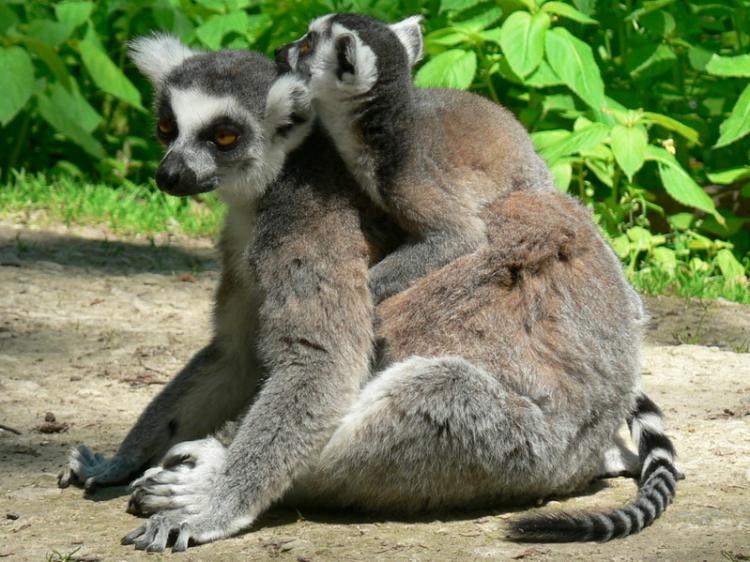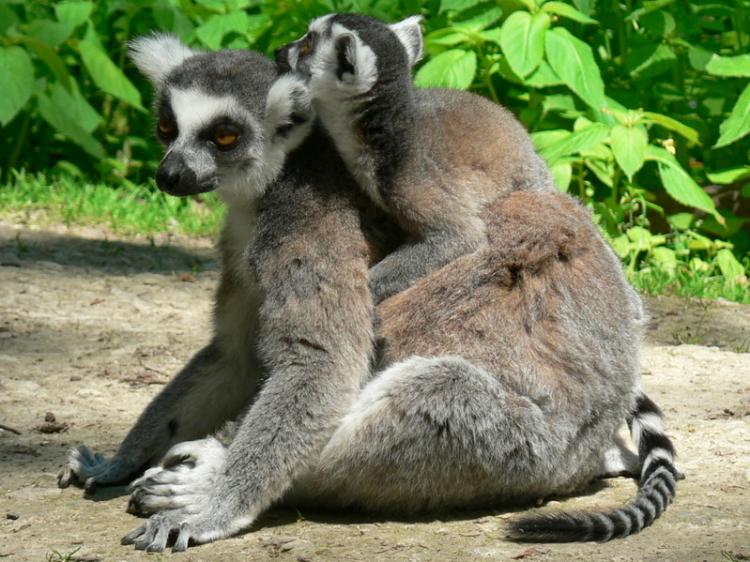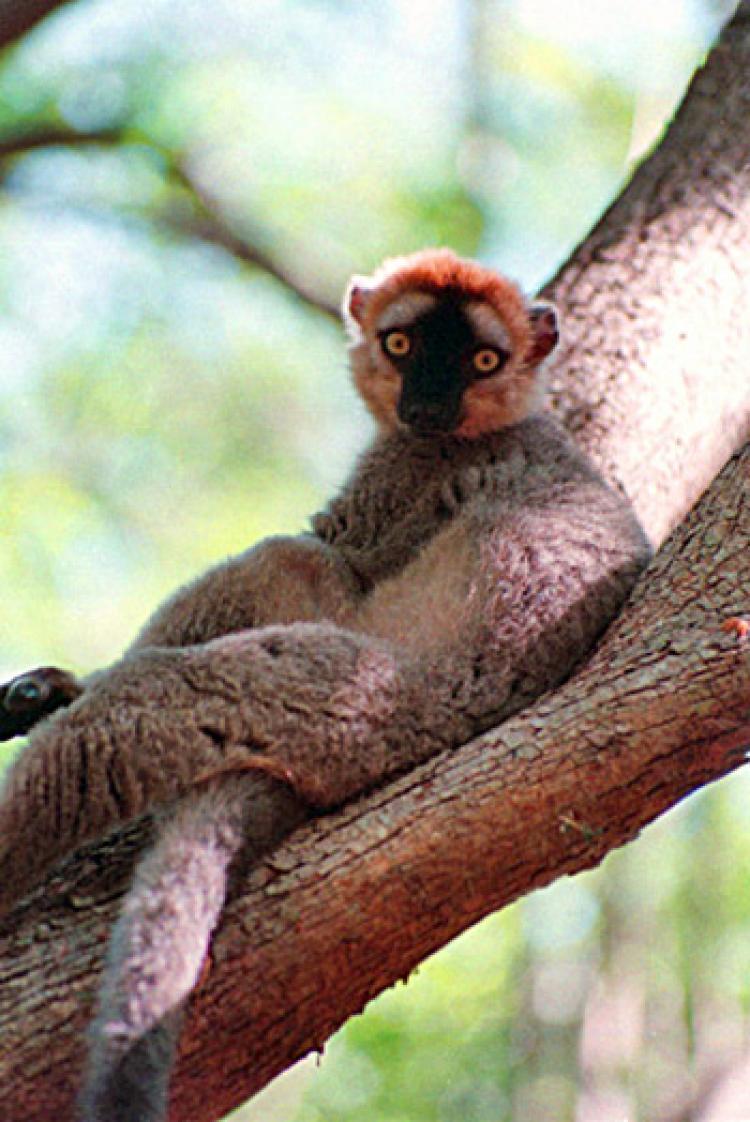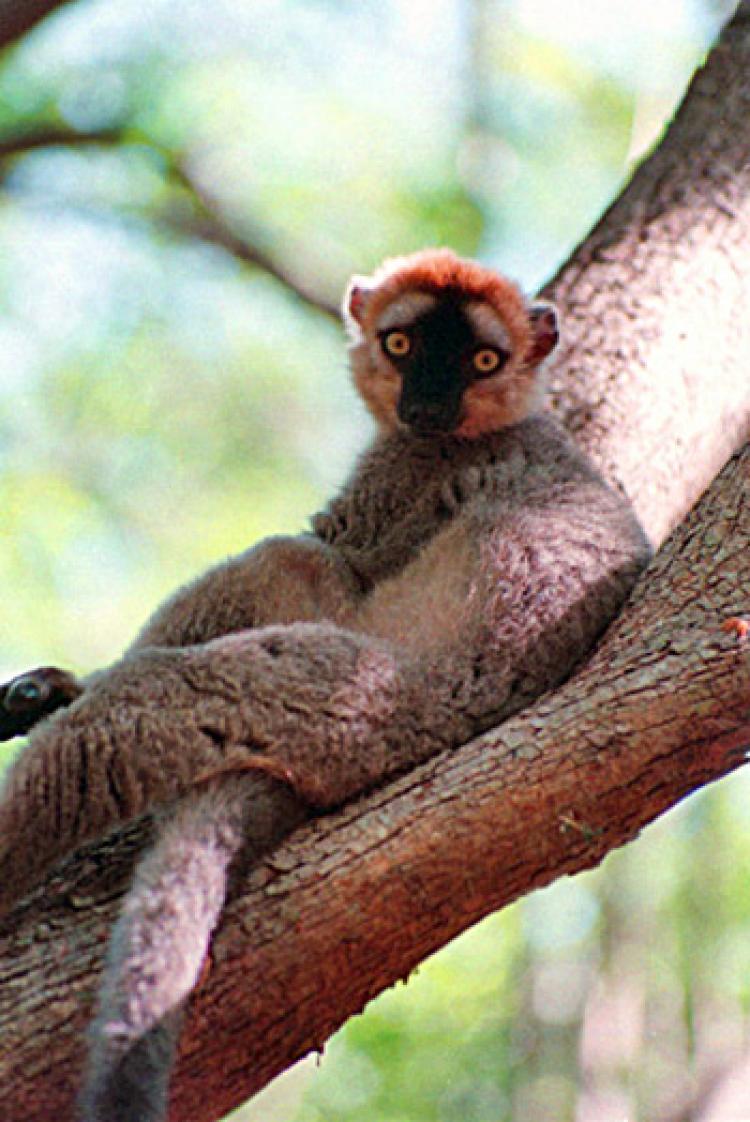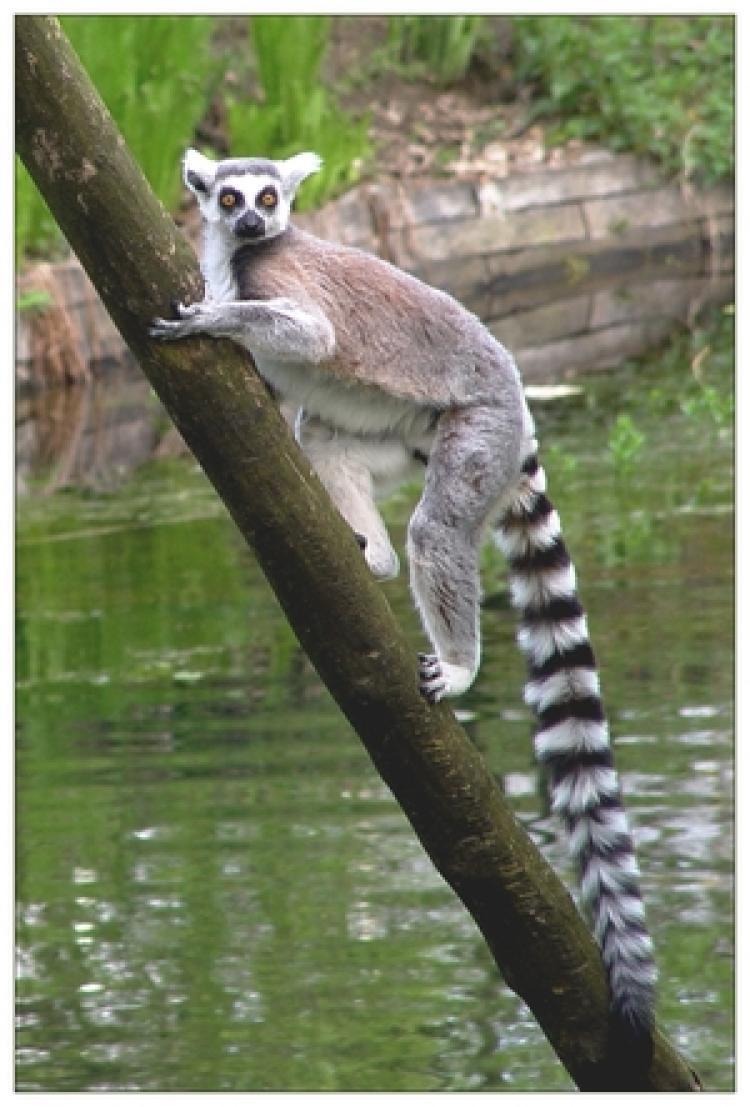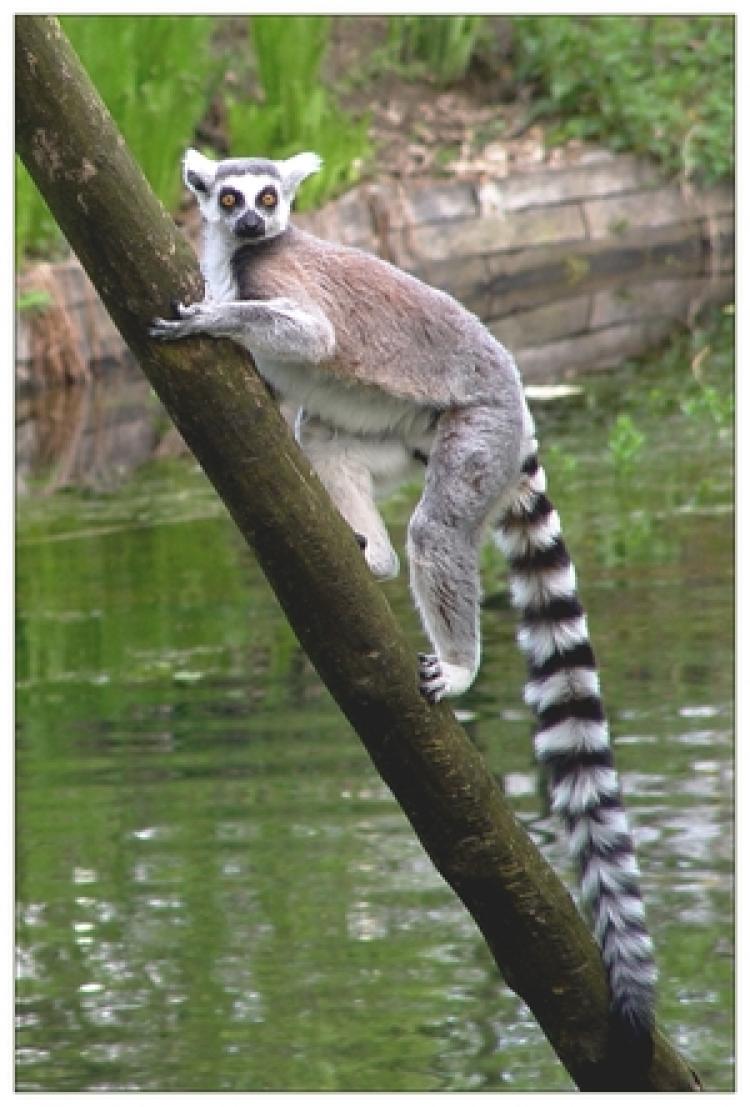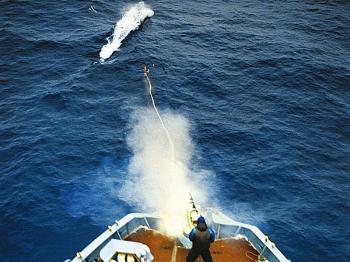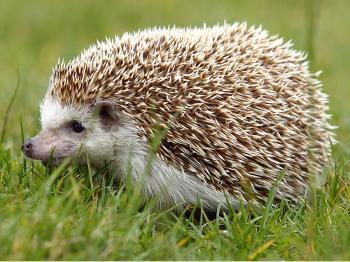Logging in Madagascar, an island nation off Africa’s southeast coast, endangers ancient animal and plants species, notably lemurs, primates only found in this region.
Many of us have seen lemurs—that old phylum of simians—in a zoo. There are more than thirty species of lemurs in Madagascar, including the greater bamboo lemur (Prolemur simus), the white-collared lemur (Eulemur albocollaris), and Perrier’s sifaka (Propithecus perrieri).
Over the past 1,500 years, more than 16 lemur species have become extinct. Environmentalists say this is mainly due to habitat destruction, but some lemurs have also been traditionally killed outright by local people. Lemur legends abound, for example one about the Aye-Aye, whose long, bony middle finger picks insect larvae from logs. Legend has it that if an Aye-aye points it’s bony finger at a person, that person will die. This has led to locals killing this animal on sight.
Depending on the type, lemurs alive today can be between 5 and 30 inches tall. Yet just a few hundred years ago, there were lemurs such as Megaladapis weighing in at an estimated 150 pounds. These, easy prey for humans, were hunted to extinction and now exist only as bones in the ground.
Many lemurs are active at night. The people of Madagascar reverently call them “forest spirits.” The few among us who have been in their presence in the jungle can relate to that designation as their screams and calls during the night have an eerie quality. Aiming one’s flashlight into the treetops brings glowing red and yellow pairs of eyes into view.
The Law is Not Enough
Even though the law protects the lemurs of Madagascar, it is not enough to save them. Approximately 298,000 acres of forest fall to logging each year as estimated by the environmental World Wildlife Fund (WWF). If this continues, Madagascar will be without forests in 40 years. The WWF has declared the lemur species one of the most endangered species of primates in the world.
But it is not only the lemurs who depend on the forests. There are 300 species of frogs—including Mantella aurantiaca, a frog with red skin—that are at risk of dying out if the forests are cut down.
The country needs its forest spirits to further the existence of its forests. Why? In a tropical climate, such as Madagascar, 90 percent of the seeds are not distributed by the wind, but rather through the movements of the forest’s animals and birds.
Many of the animals consume the seeds from these trees and disseminate the seeds with their dung on the forest floor. Research has validated that less trees grow in the areas where the brown maki forest spirit is absent.
Many of Madagascar’s inhabitants live off agricultural endeavors and animal husbandry. They often gain the land they require by resorting to the “slash and burn” method.
However, since most of the nutrients for further crops are in the plants at the base of these trees they destroy, the future soil, no matter how well cultivated, won’t yield much anymore. That leads to ever more slash and burn events in an effort to eke a living from the soil.
“The biggest problem is the criminal logging trade. Their products, without a designation of country of origin, end up as furniture or paper in mostly European countries or in the USA,” says WWF Germany’s Dorothea August.
Of the approximately 12,000 types of blooming plants and 109 kinds of mammals on Madagascar, 80 percent occurr only on the island, as do half of the 250 kinds of birds. The percentage is even higher when it comes to reptiles—95 percent of the 260 kinds are native, as are all varieties of frogs.
There are 46 parks and nature reserves in Madagascar that lure ecology-minded tourists. It’s the law that any tourist entering a park or reserve must be accompanied by a paid, official local guide, and local people who live in these areas have also set up the obligatory restaurants and accomodations. Half of the income from such ventures benefits the WWF—the money is used to protect the ecology of the local and adjacent communities.
In at least one such protected area, Ranomafana National Park in central Madagascar, hope remains. The local people, atypically, have long had a taboo against killing lemurs. With the help universities and organizations such as the WWF, the area has become a model for ecological protection. We can only hope that other areas around the country are able to do follow this lead.
